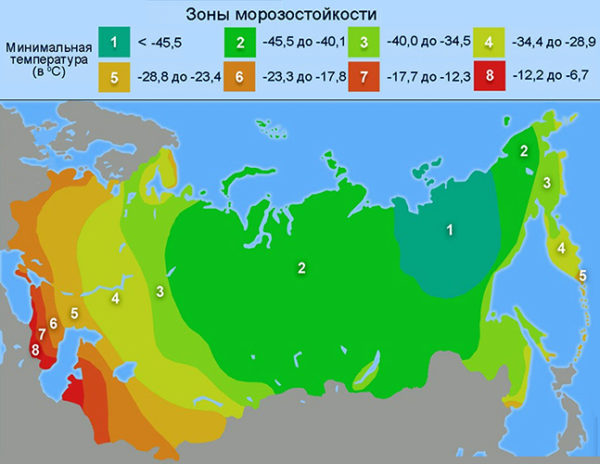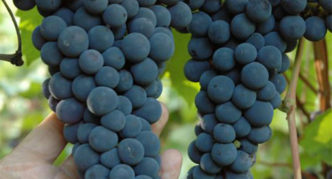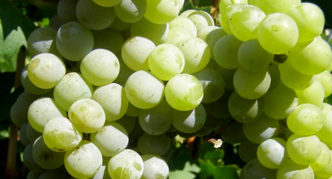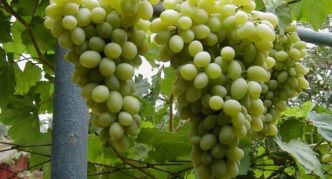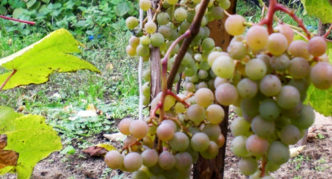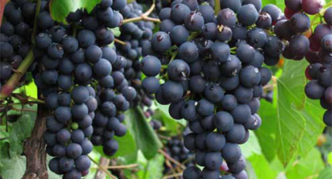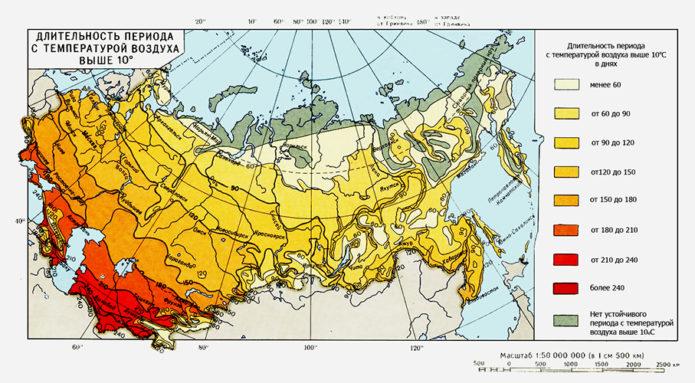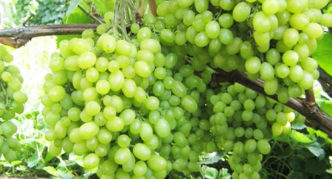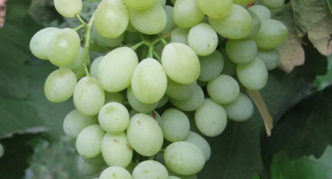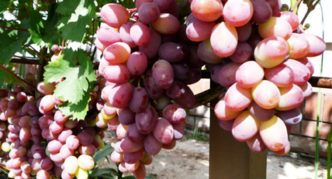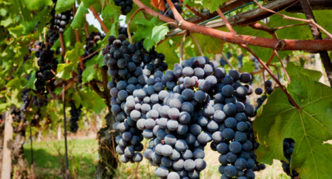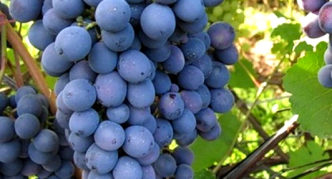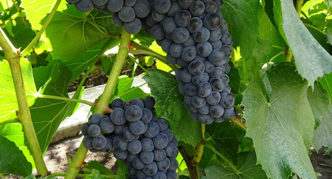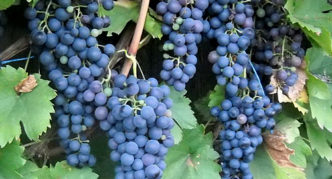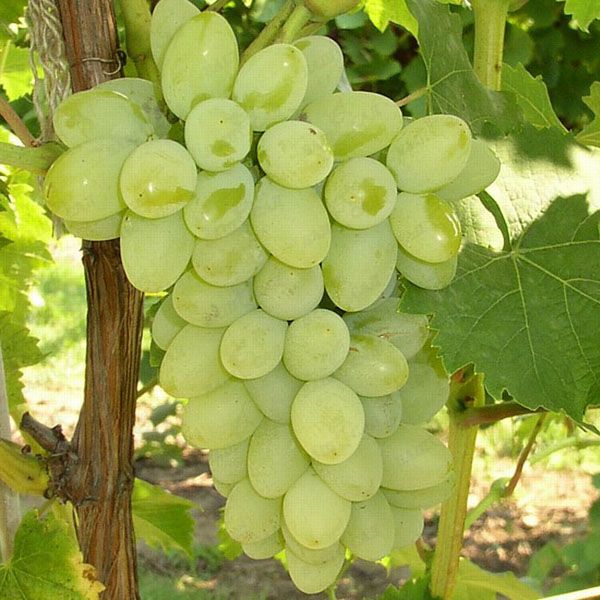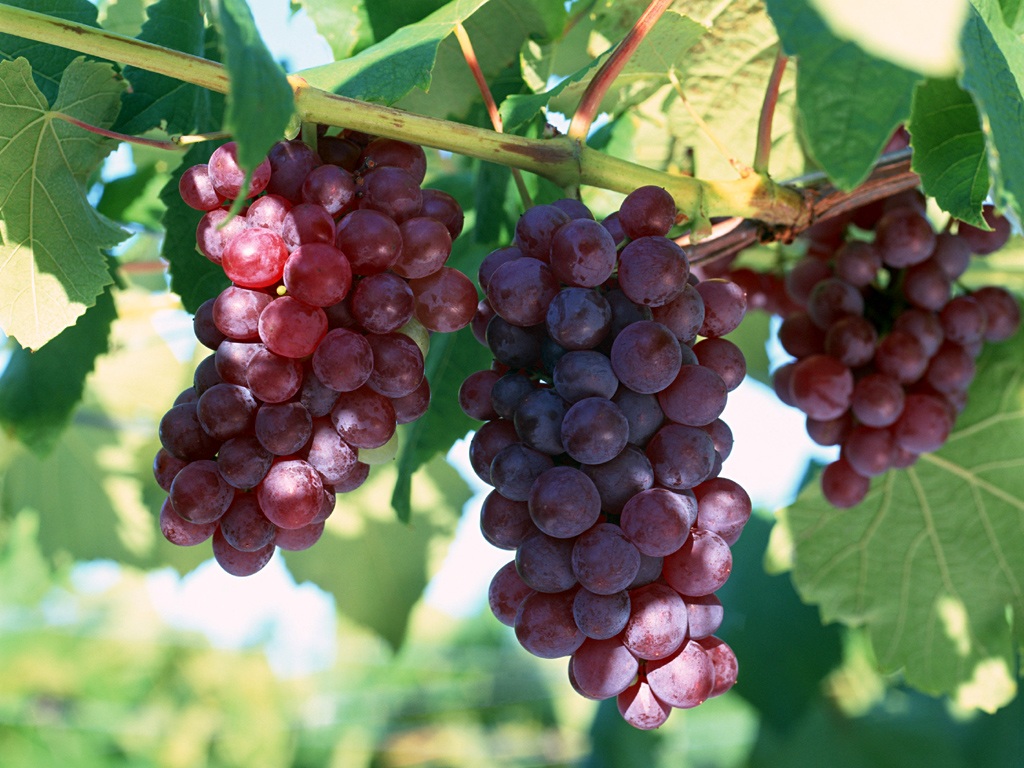Grapes are a climbing shrub, the delicious berries of which have been eaten for many centuries and used as raw materials for winemaking. The climatic conditions of central Russia make it possible to grow only frost-resistant and early maturing varieties of this plant.
Content
Grape varieties for central Russia
Many people want to grow grapes with huge bunches of large, beautiful and tasty berries near their homes. Novice growers do not always think about how much work it will take to achieve such a result. Choose a variety that will yield a good harvest when growing grapes in the middle lane Russia is not difficult. There are not so many main characteristics by which it is necessary to make a choice. Outdoor grapes should survive the winter without damage. Therefore, the main characteristic for choosing a variety is frost resistance.
Frost-resistant varieties
According to frost resistance, grape varieties are divided into 4 groups. Each combines plants that can withstand a drop in air temperature to one or another indicator:
- -35 ° С - high frost resistance.
- -27 ° С - increased resistance to frost.
- -22 ° С - average frost resistance.
- -17 ° С - poor resistance to low temperatures.
In terms of plant frost resistance, the middle zone of Russia belongs to the 4th zone (-34.4 ... -28.9 ° С). Therefore, grape varieties that can grow in these climatic conditions must have high or increased frost resistance.
The Federal State Budgetary Institution "State Commission of the Russian Federation for Testing and Protection of Breeding Achievements" (FSBI "State Breeding Commission") has created a register in which plant varieties are indicated, their main characteristics are described and recommendations are given on which region is better to grow them. In this register, 54 grape varieties are recommended for cultivation in all regions of Russia, including in the middle lane. But not all of them are suitable for open ground in terms of frost resistance.
Consider the characteristics of several grape varieties that are not afraid of frost.
Table: characteristics of grape varieties with high frost resistance
| Variety | Ripening period * (days) | Winter hardiness (° C) | The weight | Harvest (t / ha) | Assessment taste (points) | Exposure diseases | Necessity hideouts for winter (well no) | |
| Brushes (d) | Berries (g) | |||||||
| Amur breakthrough | 125–130 | Up to -40 | 270 | 4–5 | Up to 30 ** | 8,6 | Increased stability | Not |
| Moscow sustainable | 105–115 | Up to -30 | 97 | 3–4 | To 10 | 8,1 | Average | Not |
| Moscow white | 115–120 | -27…-30 | 215 | 3–4 | Up to 12 | 8,0 | Average | Yes |
| Memory of Dombkovskaya | 110–115 | -28 | 370 | 5 | 8,7 | 7,0 | Increased stability | Yes |
| Lyubava | 105–115 | Up to -27 | 200 | 5–6 | 12,2 | 7,5 | Average | Not |
* The duration of the period from appearance of leaves to ripening of berries is indicated.
** Theoretical calculation according to the applicant's data.
Breeding history, description and characteristics of the Amur breakthrough grape variety:https://flowers.bigbadmole.com/en/yagody/vinograd/vinograd-amurskiy-opisanie-sorta-foto-otzyivyi.html
Photo gallery: grapes with high frost resistance
- Bunches of Amur Breakthrough grapes can reach 270 g
- Bunches of Lyubava grapes reach 200 g
- Bunches of Moscow White grapes usually weigh 215 g
- Bunches of Moscow Stable grapes reach 97 g
- Bunches of grapes of the Pamyat Dombkovskaya variety are very large, weighing 370 g
Video: Amur Breakthrough
Early varieties
The second most important characteristic for choosing a grape variety is the ripening period. It is a heat-loving plant. Ripening of berries occurs at an air temperature of + 20 ° C and above. Moreover, the duration of the warm period in the middle lane does not exceed 120 days. Therefore, it is very important to choose grape varieties that will have time to ripen during this time.
In the descriptions of the varieties of this plant (and in the State Register too), they often indicate not the number of days, but verbal definitions - from the very early to the late. Such characteristics of the ripening time may not be very clear to the novice winemaker. The table shows the correspondence of verbal definitions with the number of days from the appearance of the first leaves to harvest and the approximate calendar dates.
Table: correspondence of the ripening time of grapes to the number of days
| Ripening periods specified in the descriptions | Days from appearance of leaves to harvest | Harvesting calendar dates |
| Superearly | 95–105 | Early august |
| Very early | 105–115 | Second half of August |
| Early | 115–120 | First decade of September |
| Mid-early | 120–125 | Second half of September |
| Middle | 125–130 | First decade of October |
| Mid late | 135–145 | Mid October |
| Late | 145-150 and more | End of october |
It can be seen from the above data that it is risky to plant even medium-early grape varieties in the middle lane. Rains and lower temperatures in late September - early October can prevent berries from gaining the proper amount of sugar. The taste of such fruits and homemade preparations from them will be too sour.
Experienced growers recommend growing grapes in central Russia, the ripening period of which does not exceed 125 days - very early, early and mid-early.
Table: characteristics of several varieties of early grapes
| Variety | Ripening period * (days) | Winter hardiness (° C) | The weight | Harvest (t / ha) | Assessment taste (points) | Exposure diseases | The need for shelter for the winter (well no) | |
| Brushes (d) | Berries (g) | |||||||
| Aleshenkin's gift ** | 110–115 | -25 | 552 | 4–5 | 8,5 | 7 | Increased stability | Yes |
| Lucy red | 105–115 | Up to -35 | 400 | 7–8 | 21,8 | 8,6 | Increased stability | Not |
| Cocktail | 105–115 | -25 | 353 | 2,5–2,9 | 32,2 | 8,3 | Average | Not |
| In memory of Shooting | 120–125 | -25 | 240 | 2,4 | 12,0 | 8,3 | Not amazed | Yes |
| Early TSHA | 110–115 | Up to -28 | 75 | 2 | 9,3 | 7,6 | Average | Yes |
* The duration of the period from appearance of leaves to ripening of berries is indicated.
** Alyoshenkin's gift is also called simply Alyoshenkin.
Light and early Aleshenkin grapes - features of planting, cultivation and care:https://flowers.bigbadmole.com/en/yagody/vinograd/vinograd-aleshenkin-opisanie-sorta-foto-otzyivyi.html
Photo gallery: early grape varieties
- A bunch of grapes of the Aleshenkin Dar variety weighs 552 g
- A bunch of grapes of the Cocktail variety reaches 353 g
- A bunch of Lucy red grapes usually weighs 400 g
- A bunch of grapes of the Memory Strelyaeva variety reaches 240 g
- A bunch of Early TSKHA grapes weighs little, only 75 g
Video: grape variety Cocktail
Non-covering varieties
Grapes in the 4th and 5th zones of plant frost resistance are grown in two ways - covering and non-covering. Non-susceptible varieties are removed from supports and covered for the winter with earth or covering materials. And grape varieties that withstand winter thaws, cold winds and sudden changes in air temperature do not require shelter.When choosing plants for their site, beginners in viticulture need to think about whether they have enough funds and strength to cover the grape bushes every fall.
The tables of characteristics of frost-resistant and early varieties indicate which varieties can be grown without shelter for the winter:
- Amur breakthrough;
- Moscow sustainable;
- Lyubava;
- Lucy is red;
- Cocktail.
The State Register does not always indicate which of the varieties can be grown in the middle lane without shelter for the winter. Such data can be obtained only by contacting the All-Russian Research Institute of Viticulture and Winemaking named after Ya. I. Potapenko or experienced winegrowers of the Moscow Society of Naturalists (MOIP). One of the members of the viticulture group, who participated in the systematization of data on the cultivation of this crop in the Moscow region, Alexander Ivanovich Sopin recommends growing other grape varieties without shelter.
Table: characteristics of non-covering grape varieties
| Variety | Ripening period * (days) | Winter hardiness (° C) | The weight | Harvest (t / ha) | Exposure diseases | Assessment taste (points) | |
| Bunches (d) | Berries (d) | ||||||
| Agat Donskoy ** | 115–120 | -26 | 400–500 | 4–5 | 12 | Increased stability | 7,7 |
| Alpha | 110–115 | -35 | 150 | 2–3 | 7,8 | weak | 7,5 |
| Sukrib | 95–105 | -30 | 150–190 | 3,5–4 | 10,2 | Increased stability | 7,5 |
| Saperavi north *** | 135–145 | -35 | 105 | 0,7–1,2 | 9 | Relative stability | 7,8 |
| Valiant | 130–138 | Up to -46 | 100 | 1,5–2,5 | 12,7 | Relative stability | 7,8 |
* The duration of the period from appearance of leaves to ripening of berries is indicated.
** In the State Register it is recommended for the Ural region.
*** High winter hardiness is indicated in the State Register.
If you trace the entire pedigree of the Agat Donskoy variety, then along all the lines, among its close or more distant ancestors was the Amur wild grape - a plant very resistant to low temperatures and various diseases:https://flowers.bigbadmole.com/en/yagody/vinograd/vinograd-agat-donskoy-opisanie-sorta-foto.html
Photo gallery: characteristics of non-covering grape varieties
- A bunch of Agat Donskoy grapes can weigh 0.5 kg
- A bunch of Alfa grapes reaches 150 g
- A bunch of Valiant grapes weighs 100 g
- The bunch of Saperavi Severny grapes reaches 105 g
- A bunch of Sukrib grapes weighs just over 150 g
Video: Alpha grapes
Technical grades
The grapes are combined into 3 groups for the use of berries:
- dining room - they eat fresh berries;
- universal - use fresh and prepare juices, wines, canning;
- technical - prepare wines, juices and other types of home preservation.
For technical varieties of grapes, an increased content of juice in berries is characteristic - 70-80% of their weight.
In such varieties, it is not the beauty and size of the bunches and berries that are evaluated, but the taste of the wine, which is obtained from its fruits. The State Register lists only 8 varieties of technical grapes that can grow in all regions:
- Alievsky;
- Andreevsky;
- Ermak;
- Zelenolugsky ruby;
- Manych;
- Ruby AZOS;
- Ryabinsky;
- Stirrup.
But in terms of frost resistance and the duration of the ripening period for fruits for central Russia, winegrowers consider only 2 varieties to be most suitable - Ermak and Zelenolugsky ruby.
Table: characteristics of technical grape varieties
| Variety | Ripening period * (days) | Winter hardiness (° C) | The weight brushes (d) | Harvest (t / ha) | Sugars / acids (g / l) | Exposure diseases | The taste of wine (points) |
| Ermak | 115–120 | -23 | 181 | 10,7 | 18,6/8,3 | Average | 7,5 |
| Zelenolugsky ruby | 115–120 | -26 | 204 | 11,5–15 | 19,7/7,3 | Increased stability | 7,7 |
* The duration of the period from appearance of leaves to ripening of berries is indicated.
Video: Ermak grapes
Subtleties of agricultural technology
Newcomers to viticulture need to know a few rules for growing grapes in the middle lane. Alexander Ivanovich Sopin recommends:
- In February, at home, start rooting cuttings (shanks), and planting seedlings purchased in advance in large containers (5-6 liters) on the southern windows.
- Plant vegetative seedlings in open ground after the threat of return frosts has passed, in trenches or pits 1 m deep, filled with humus.
- In the same year, in the fall, begin to form a bush so that in the future you will get a plant with a large amount of old wood.
- In the first year of planting, seedlings of any varieties, regardless of the frost resistance of the plant, should be covered for the winter.
- To carry out treatments for diseases. Cool and rainy weather contributes to their occurrence.
Novice winegrowers in central Russia can succeed in this difficult task if they take into account the peculiarities of growing grapes and select a variety whose characteristics are suitable for the climatic conditions of this region.
